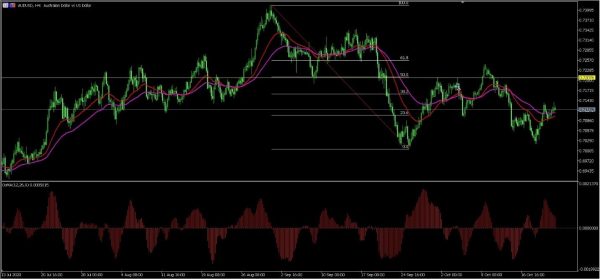The New Zealand dollar is little changed as the market reacts to New Zealand’s consumer price index. According to the statistics bureau, the country’s inflation rose by 0.7% in the third quarter after dropping by 0.5% in the second quarter. That increase was less than the 0.7% analysts polled by Reuters were expecting. On an annualised basis, the CPI rose by 1.4%, down from the previous 1.5%. The weak inflation data comes at a time when the country’s economy is on a recovery path. Also, the country’s central bank has said that it is likely to lower interest rates to below zero.
The Australian dollar rose slightly as traders reacted to the preliminary manufacturing and services PMI. According to Markit, the manufacturing PMI declined from 55.4 in September to 54.2 in October. In the same month, the services PMI rose from 50.8 to 53.8, in a sign that the country’s economy is recovering. The improvement came as Australia eased movement restrictions between Victoria and Melbourne. The currency also reacted to news that the country will expand its exports base by selling green hydrogen to Asian countries.
Later today, the focus will be on the preliminary manufacturing and services PMI numbers by Markit. Analysts expect the data to show that the German manufacturing PMI fell from 56.4 in September to 55.1 in October. For the Eurozone and the UK, they expect the data to show that the PMI fell from 53.7 to 53.1 and 54.1 to 54.3, respectively. Further, the Office of National Statistics (ONS) will release UK retail sales numbers while the Sweden statistics agency will release the producer price index numbers. Later on, Baker Hughes will release the US oil and natural gas rig count numbers.
EUR/USD
The EUR/USD pair declined to an intraday low of 1.1786, which was the lowest level since October 20. The price was also slightly above the 50% Fibonacci retracement level while the Relative Strength Index (RSI) has dropped to the oversold level of 30. The pair is also below the 25-day and 14-day moving averages. It has also formed an equidistant downward channel. Therefore, the pair is likely to continue falling as bears aim for the 61.8% retracement level at 1.1760.
NZD/USD
The NZD/USD pair was little changed today as traders reacted to New Zealand’s inflation data. It is trading at 0.6670, which is slightly below yesterday’s low of 0.6688. On the four-hour chart, this price is above the 25-day and 15-day moving averages while the signal and main line of the MACD have moved above the neutral line. It is also between the 50% and 61.8% Fibonacci retracement levels. Therefore, the pair is likely to continue rising as bulls aim for the next resistance at 0.6800.
AUD/USD
The AUD/USD price is trading at 0.7120, which is slightly below yesterday’s high of 0.7140. On the four-hour chart, the price is slightly above the 23.6% Fibonacci retracement level. It is also slightly above the dots of the Parabolic SAR and the 14-day triple exponential moving average (TRIX). The moving average of oscillator has moved above the neutral line. Therefore, the price is likely to continue rising as bulls aim for the next resistance at 0.7150.















